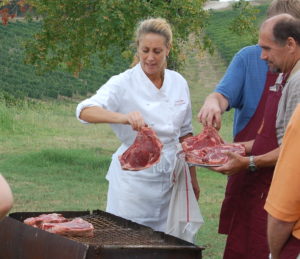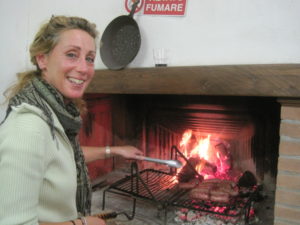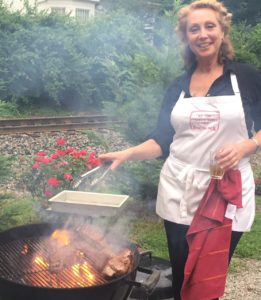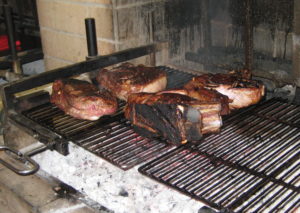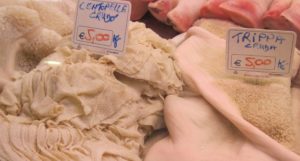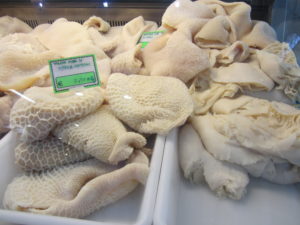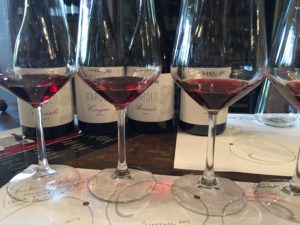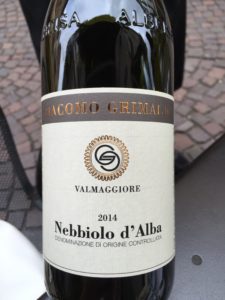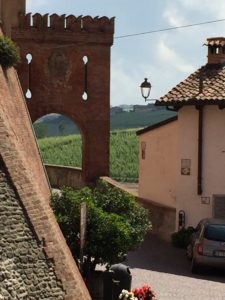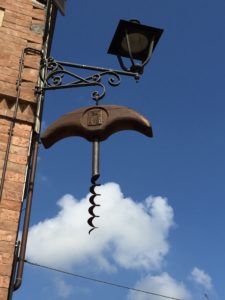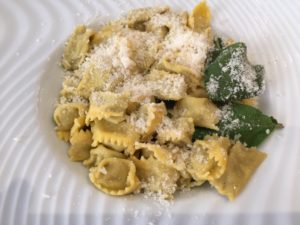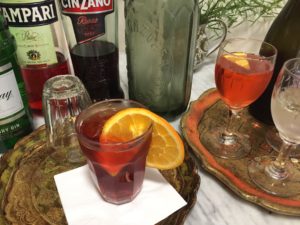 In the spirit of international Negroni week, here’s a little insight into the aperitivo, that time-honored tradition in Italy of enjoying a light cocktail before dinner. The ritual of taking time at the end of the day to have a drink in the company of friends is quintessentially Italian, preferably in a lovely café or sitting at a table in an historic piazza. The word aperitivo originates from the Latin verb aperire which means “to open,” and the purpose of an aperitivo is to stimulate and open your appetite, preparing you to eat the evening meal. Italian aperitivi are lighter than American cocktails and have a base of bitters or vermouths, all of which help with digestion.
In the spirit of international Negroni week, here’s a little insight into the aperitivo, that time-honored tradition in Italy of enjoying a light cocktail before dinner. The ritual of taking time at the end of the day to have a drink in the company of friends is quintessentially Italian, preferably in a lovely café or sitting at a table in an historic piazza. The word aperitivo originates from the Latin verb aperire which means “to open,” and the purpose of an aperitivo is to stimulate and open your appetite, preparing you to eat the evening meal. Italian aperitivi are lighter than American cocktails and have a base of bitters or vermouths, all of which help with digestion.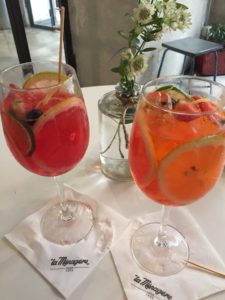
The aperitivo culture of northern Italy, especially in cities like Torino and Milano, is legendary, and a number of famous cocktails originated from this ritual. The creator of the vermouth Carpano Antico, Antonio Benedetto Carpano, is believed to have started the tradition in Torino in 1786. Gaspare Campari opened a café in Milano in the 1860’s and began serving his home-brewed invention, Campari bitters. Campari and soda is a classic aperitivo and still very much la moda today.
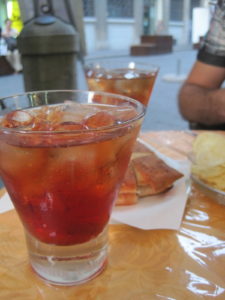 The Negroni is said to have been invented in Florence in 1919 by a Count Camillo Negroni and is equal parts gin, sweet vermouth and Campari. The Count must have been influenced by the English aristocracy that was so much a part of Florentine society at that time – gin is very much an English spirit and the Negroni cocktail is much higher in alcohol than what is normally drunk before dinner in Italy.
The Negroni is said to have been invented in Florence in 1919 by a Count Camillo Negroni and is equal parts gin, sweet vermouth and Campari. The Count must have been influenced by the English aristocracy that was so much a part of Florentine society at that time – gin is very much an English spirit and the Negroni cocktail is much higher in alcohol than what is normally drunk before dinner in Italy.
Having experienced this tradition all over Italy, we think the best place to have an aperitivo is in an elegant historic café in a city, especially in northern Italy. The cocktails are beautifully made and served in lovely glasses with a slice of lemon or orange and they are always served with snacks. The Italians believe you should never drink without something to eat, and these stuzzichini can be as simple as peanuts, olives or chips, although some bars offer more elaborate nibbles like finger sandwiches, pizza rounds and vegetables. Many bars have their own signature cocktails in addition to the classics.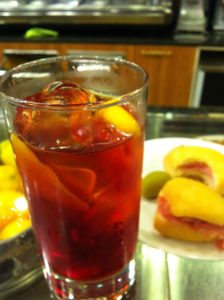
Below are some of the more traditional aperitivi. They are simple to make and refreshing to drink whether you’re in an Italian piazza or on your own terrace or patio this summer, so try one! Remember that one or two aperitivi open your appetite; three or four close it down, so plan dinner accordingly! 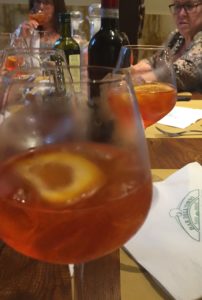
Negroni – equal parts gin, Campari bitters, and sweet vermouth like Cinzano or Martini & Rossi
Sbagliato – means “wrong” and is so called because someone screwed up making a negroni! Equal parts prosecco, Campari and vermouth. More than likely, the Italians just felt the gin was too heavy and substituted a lighter sparkling white wine
Americano – equal parts Campari and sweet vermouth with a splash of soda
Spritz – a Venetian classic, it’s 3 parts prosecco to 1 part Aperol, an orange bitters from the Veneto, with a splash of soda.
Vermouth – Lots of lovely vermouths are made in northern Italy and are enjoyed before dinner over ice. Made by steeping bitter and floral herbs in wine, it’s both an Italian and French classic.
Campari (or Aperol) and soda – a classic and a bit of an acquired taste but once you fall in love with it, every sip takes you back to Italy!
All of these classics are served either over ice or straight up and garnished with an orange peel.
